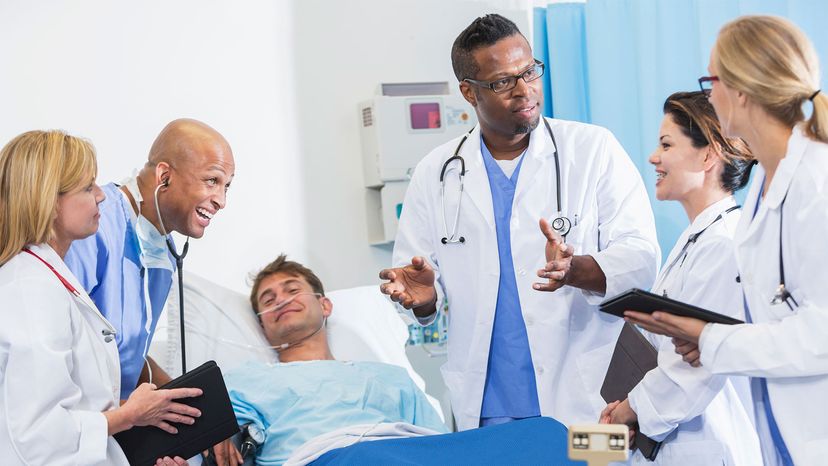
There is no other profession in the world that requires as much schooling and hands-on professional training as becoming a doctor. It makes sense, of course, since doctors are routinely called on to make life and death decisions based on in-depth knowledge of the human body, common and rare diseases, and how best to treat them. But if you have a true passion for learning and helping others, there is no greater calling.
Before starting the process of becoming a physician (or any profession) you must do some honest soul searching. First of all, you must be aware of the time commitment involved in becoming a physician. Medicine is a career that requires many years of preparation. Generally most people graduate college at age 22 and medical school at 26. Then after three years of internship and residency, many physicians begin their career at age 29. However, the training for some specialties can last until the physician's early to mid 30's. Obviously this can delay plans for marriage and starting a family.
Advertisement
Some people begin their medical education after pursuing other careers, which can further delay the completion of their medical training. You must decide early on if you are willing to dedicate the time it takes to become a physician. As you can see, this is not a decision to be made lightly.
More importantly, you must decide if medicine is a field that is right for the kind of person you are. I believe that there are three cornerstones of a successful career in medicine:
- a love for learning in general
- a true intellectual curiosity about medicine in particular
- a strong desire to help others
Being smart and doing well in the sciences are obviously important components of being a successful physician. However, do not fall into a medical career because you have done well in the sciences. Although this is a necessary requirement, you must also be able to relate well with people.
As a physician, you have an opportunity to help others. Wanting to help others and enjoying helping others are necessary attributes of a good physician. This is something that cannot be taught. However, there are many other professions that can help others. Politicians, religious leaders and social workers all have the opportunity to help others, perhaps in larger numbers.
Medicine is a career filled with choices. In what other career can you choose between delivering babies, taking care of children, handling emergencies, removing someone's cancer, or talking to someone who needs psychiatric help? Better yet, you can teach others any of these specialties, and while teaching have the opportunity to both practice your profession and teach it. Alternately, you can do research in whatever specialty you choose, with the potential to make a real breakthrough in preventing or treating illness. In addition medicine is a career that is honorable and is held in high esteem, allows you the ability to live just about anywhere, and provides job security (unfortunately, illness is something that will be around for the foreseeable future).
However, all of this comes at a price. The many years of preparation, the discipline, the awesome responsibility, the worry about malpractice and the long hours can take their toll. Medicine is a unique field and it demands a unique person.
One word about money. Please don't let this be a driving factor in your decision, for the sake of your patients and yourself, because it will not sustain you. There are other careers in which you can make more money without the responsibility and the effort it takes to be a physician.

